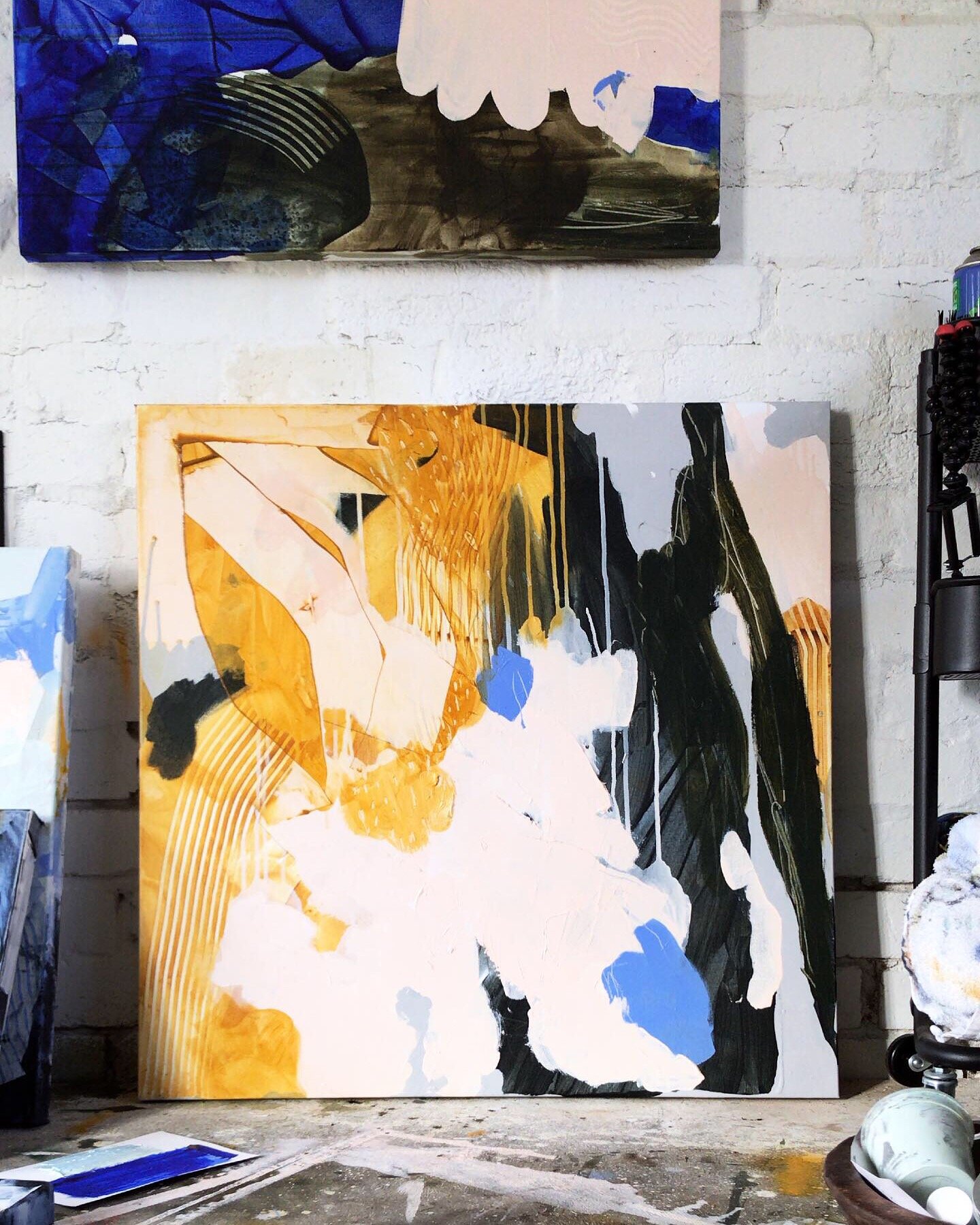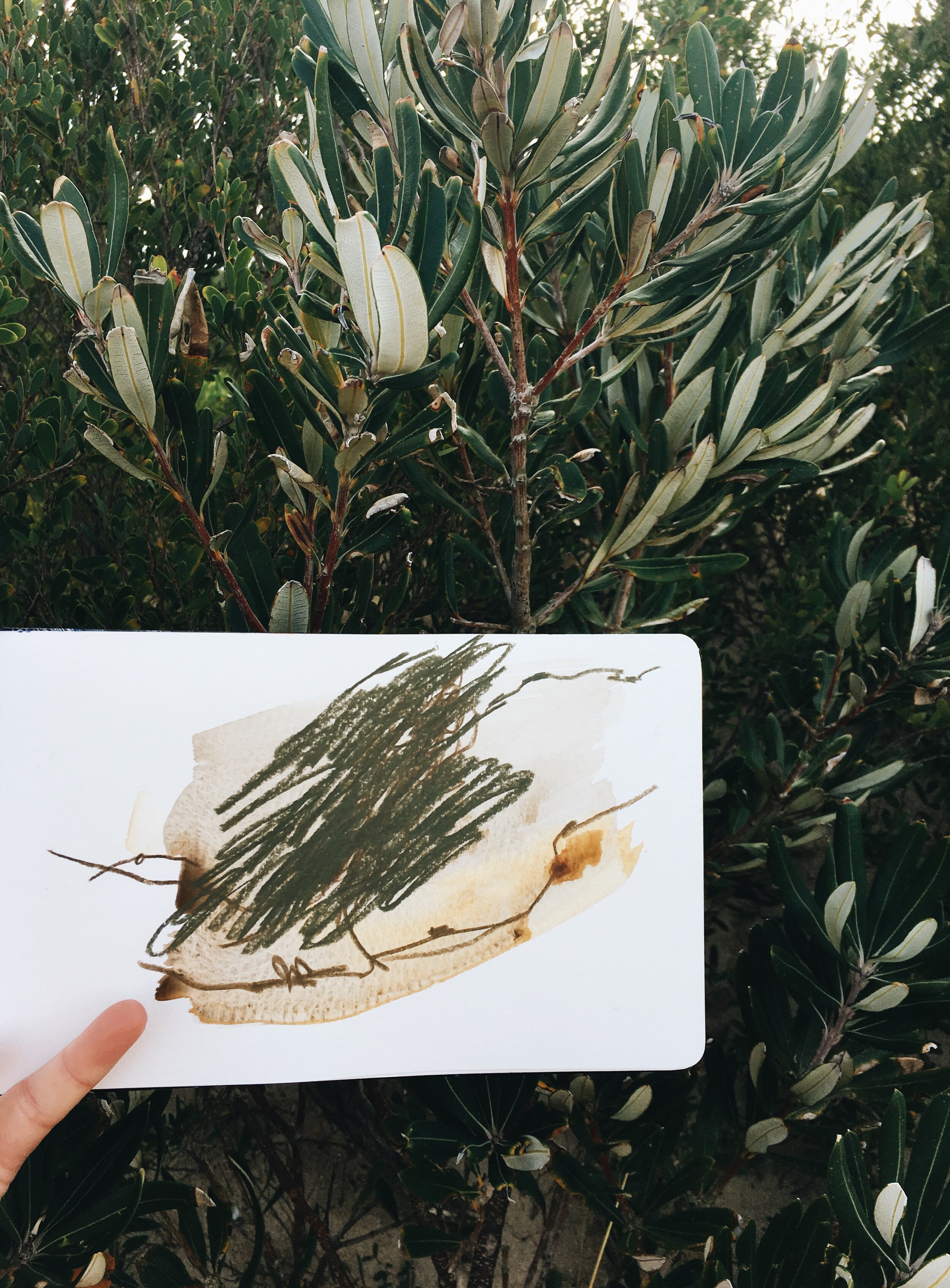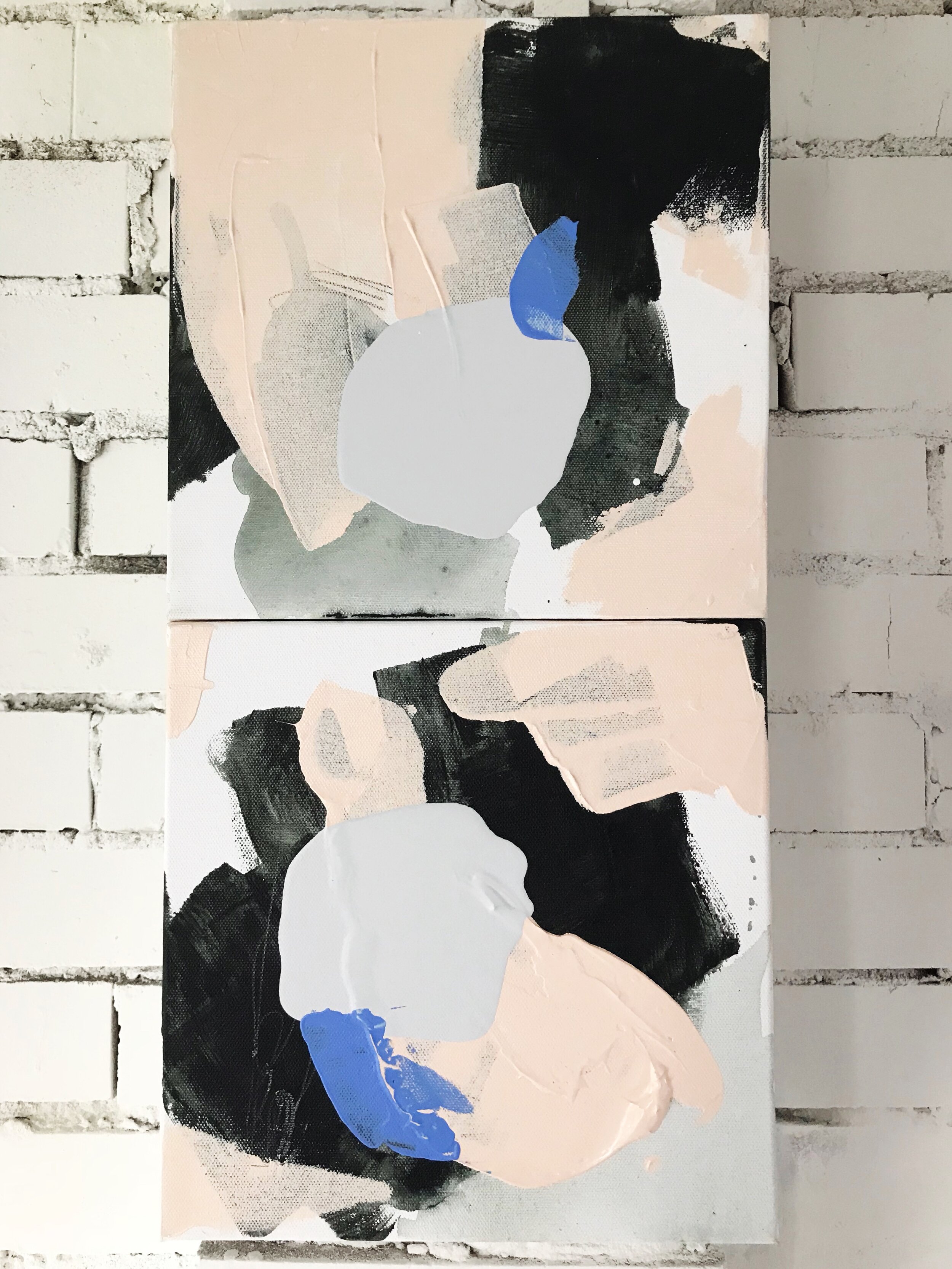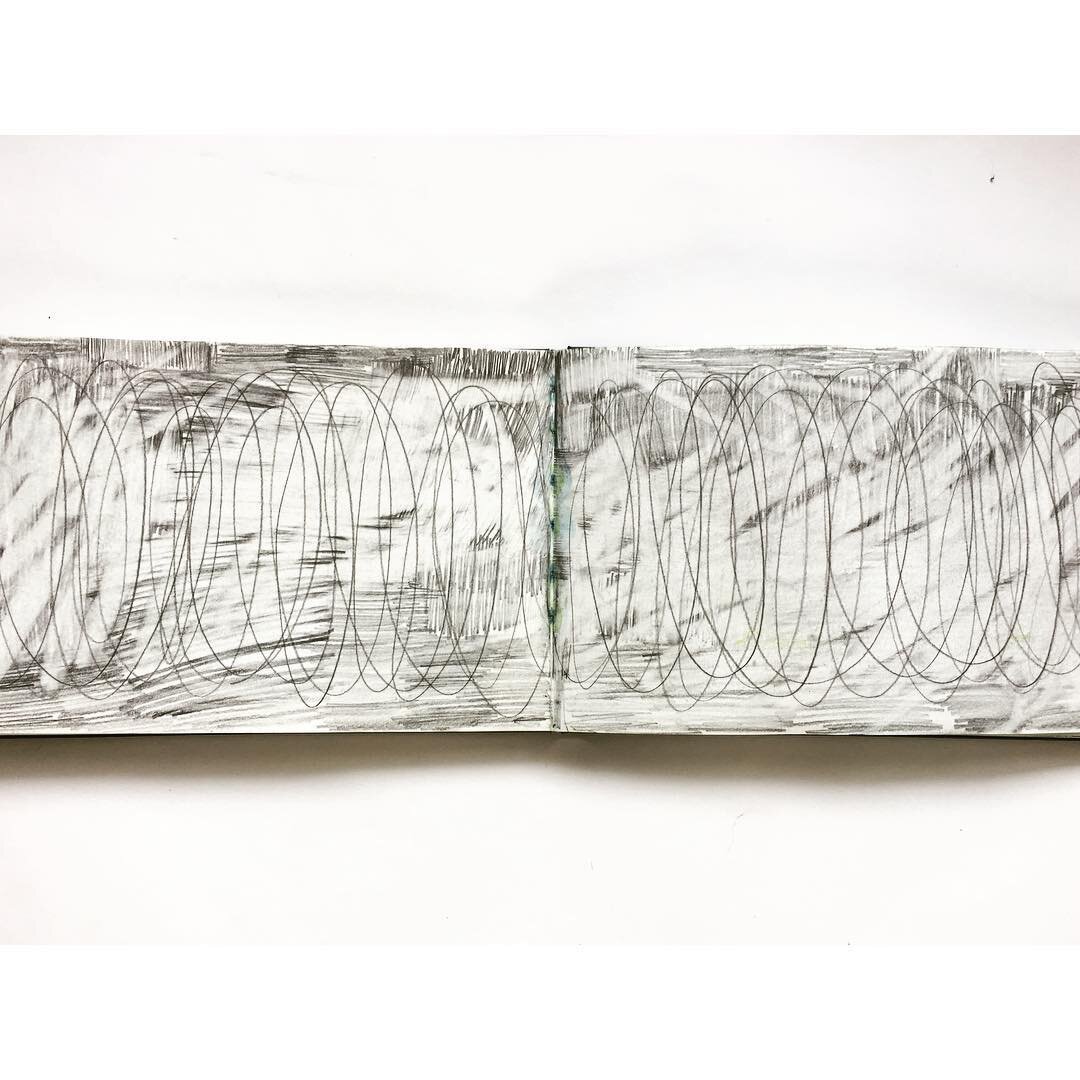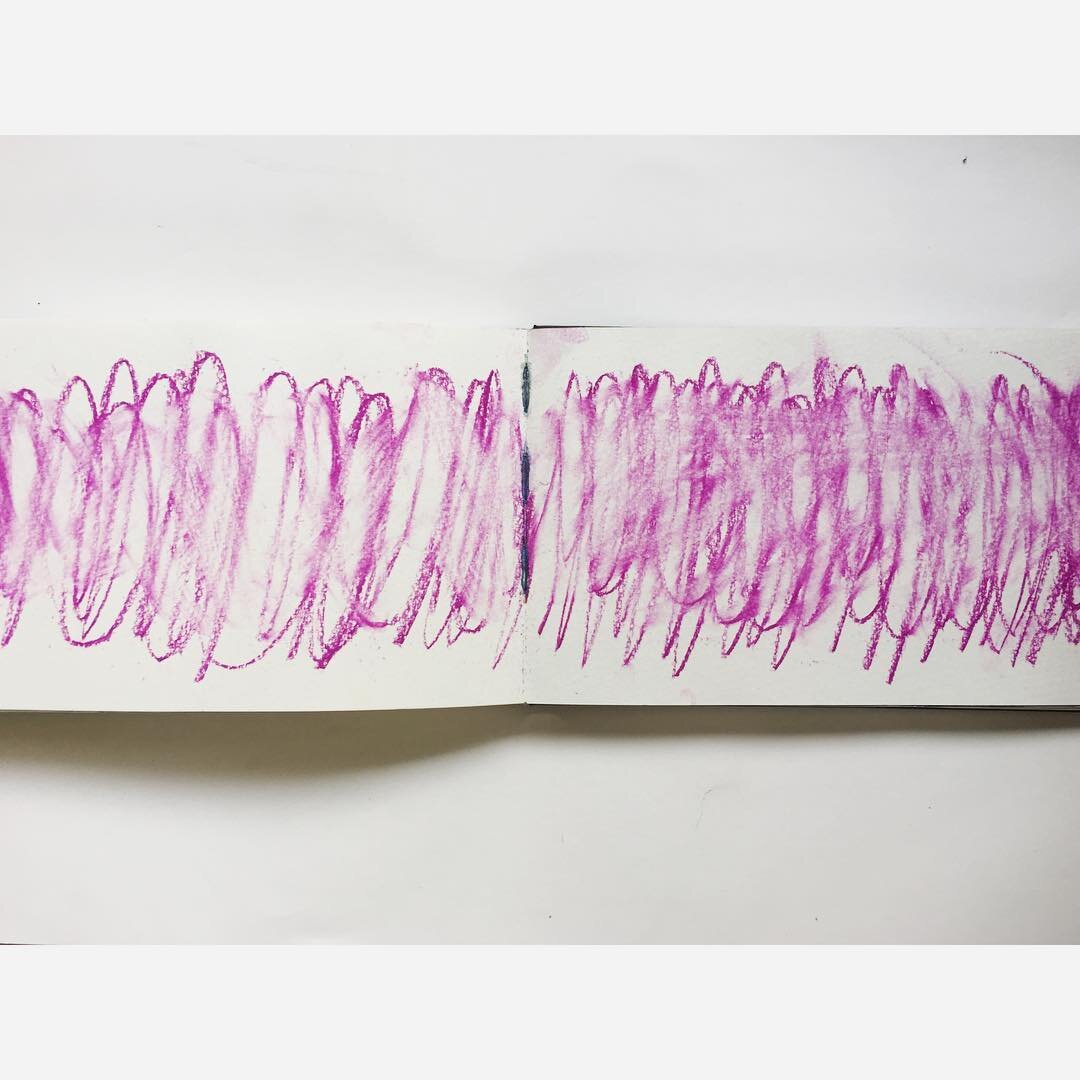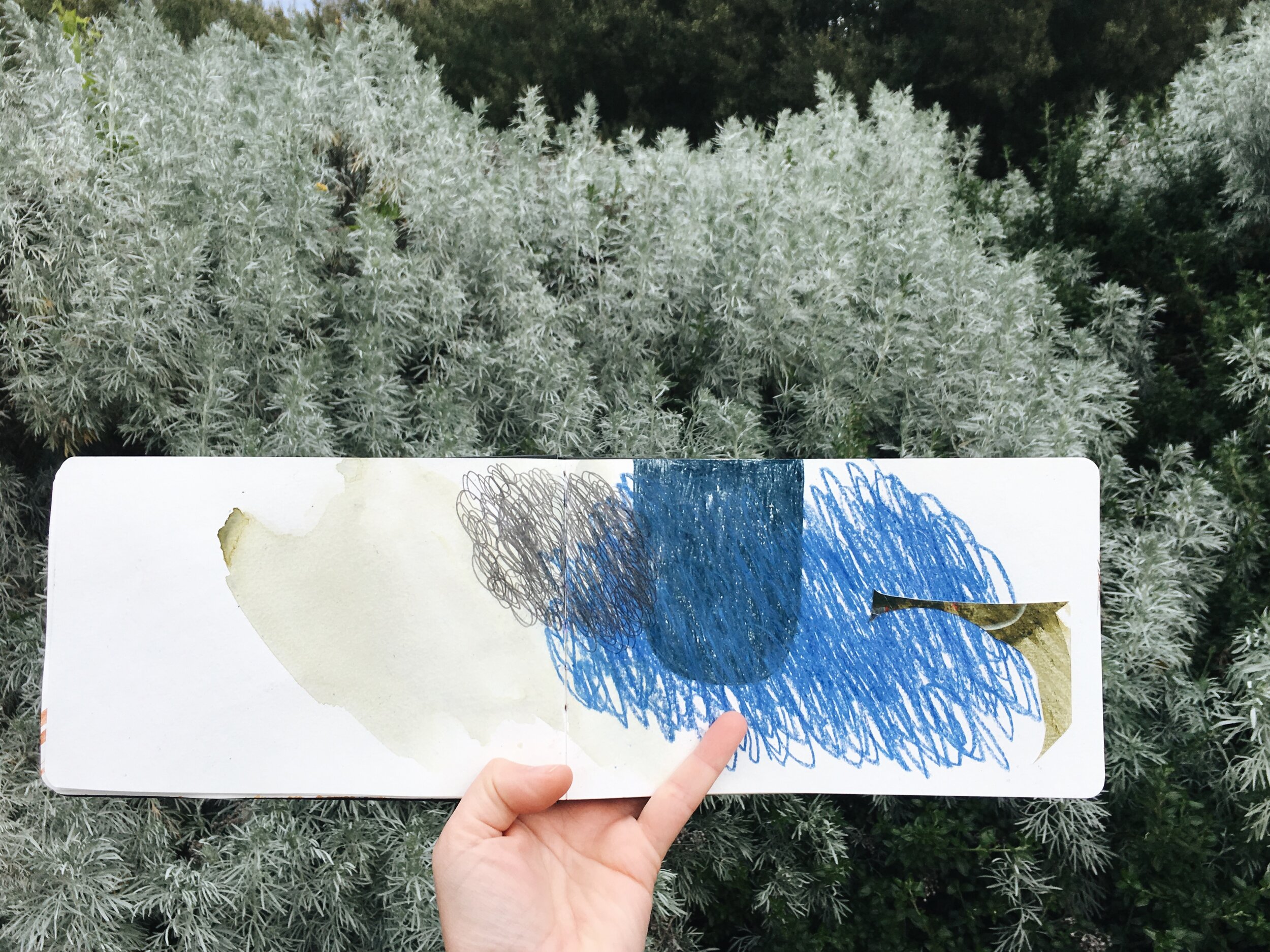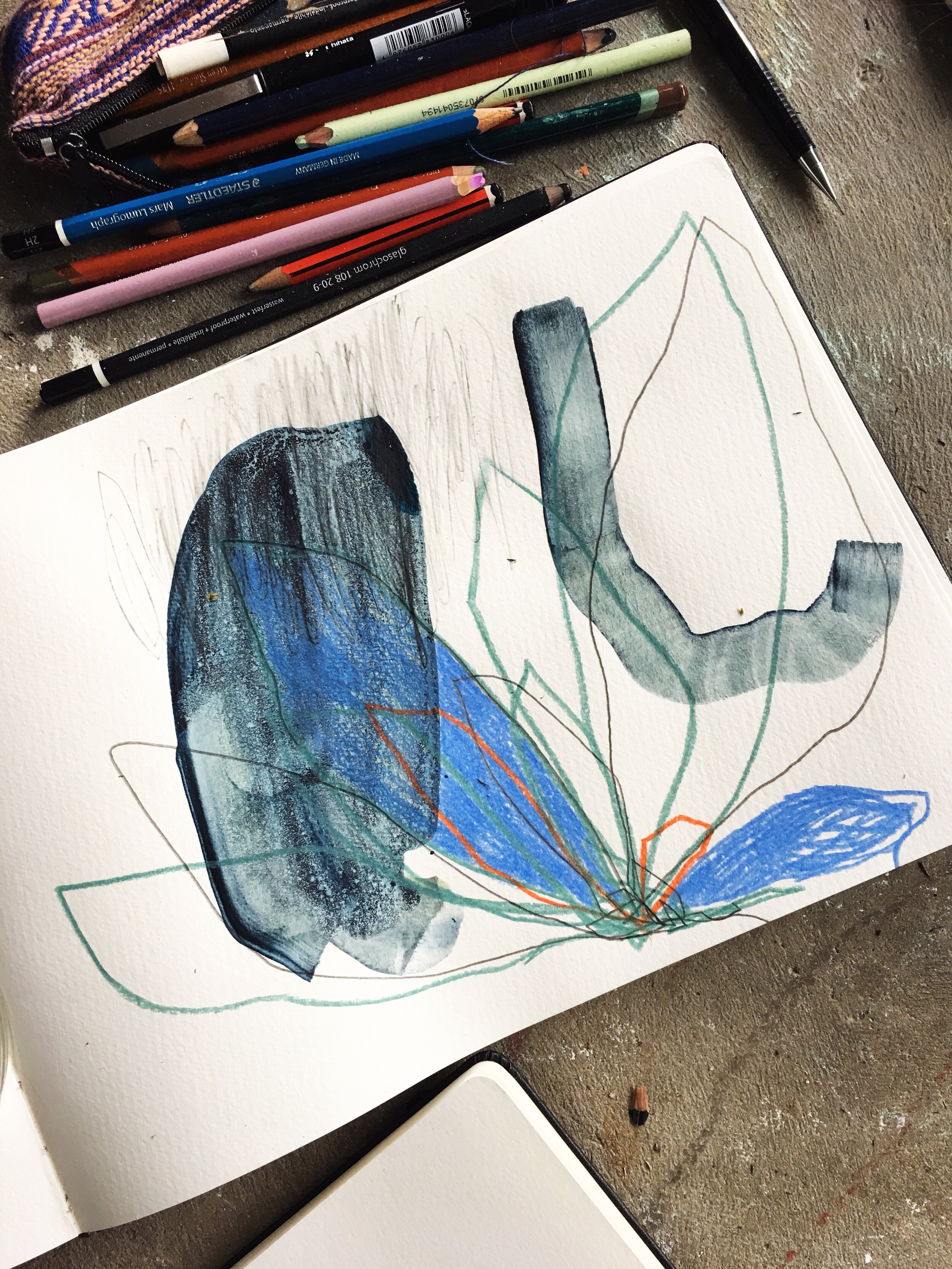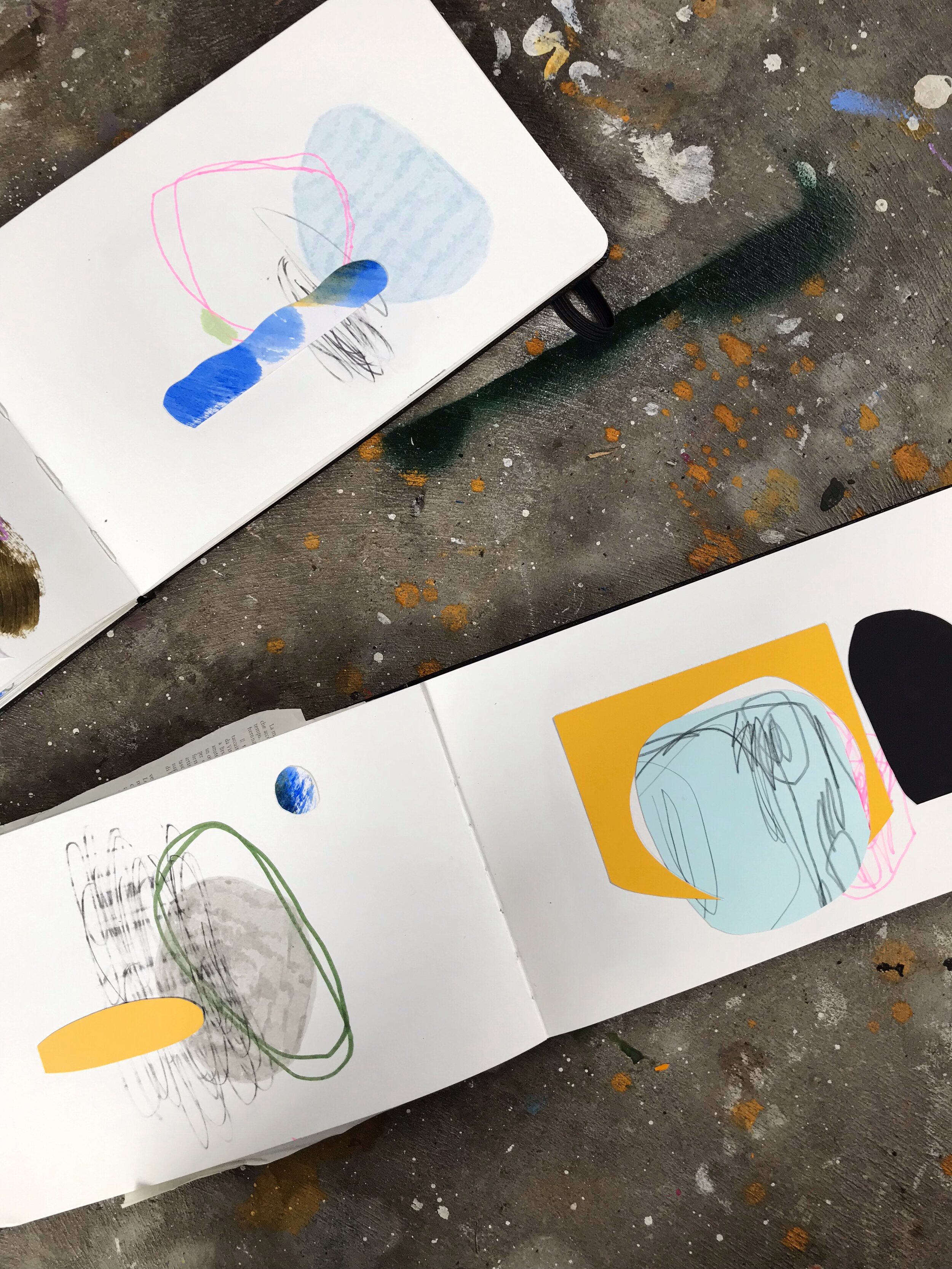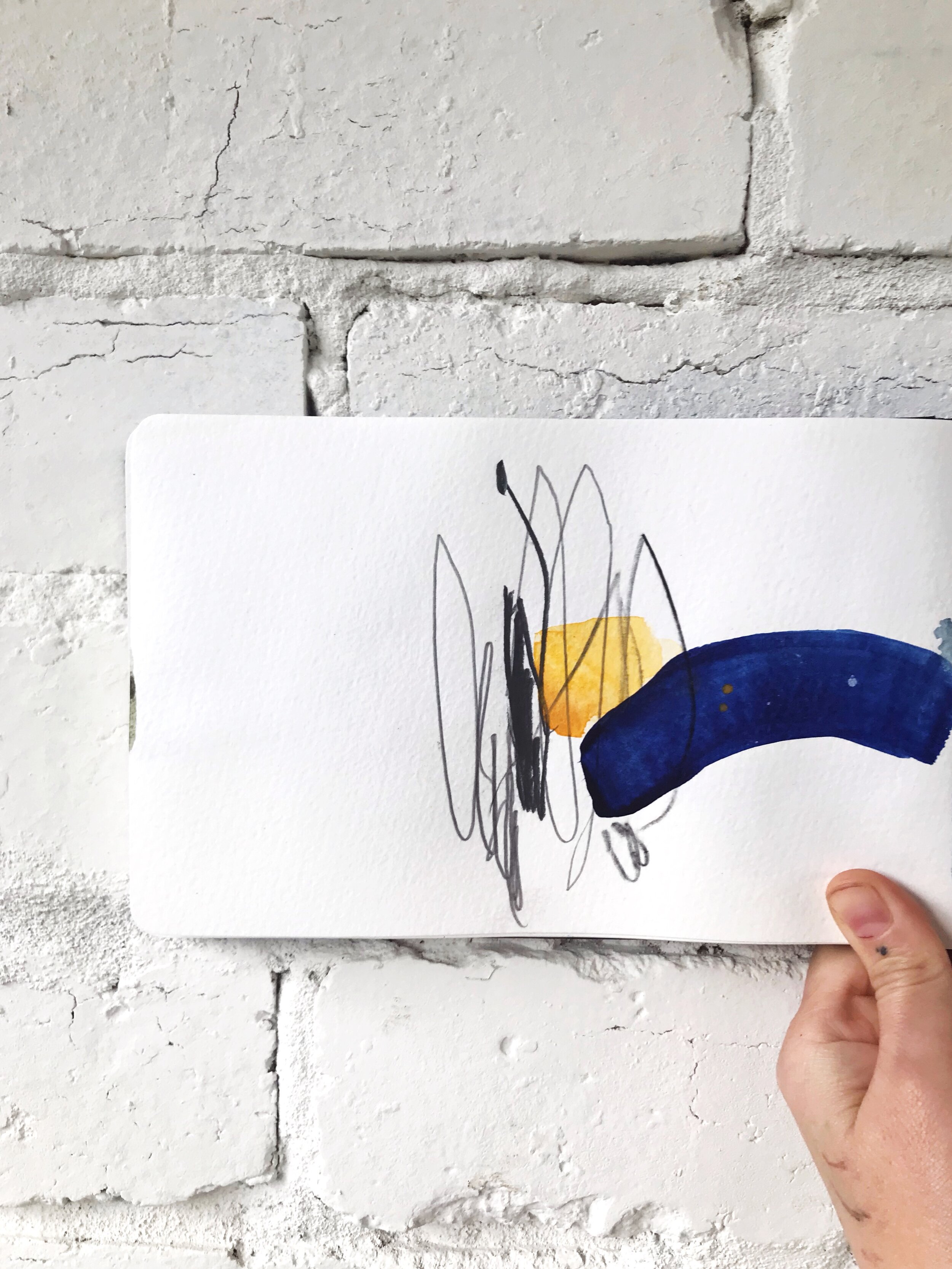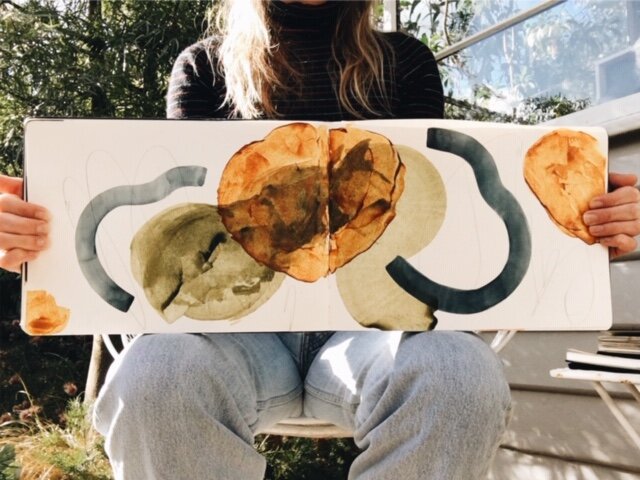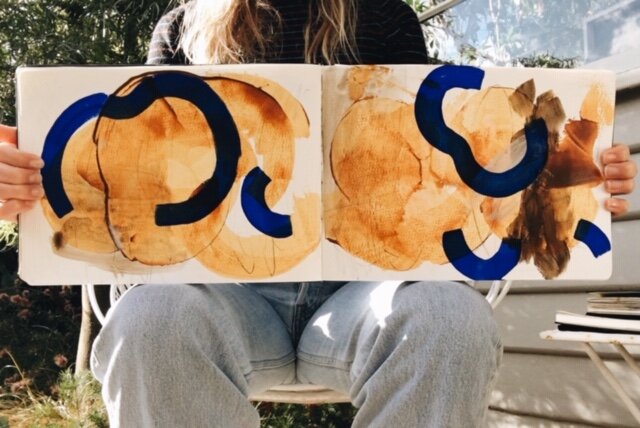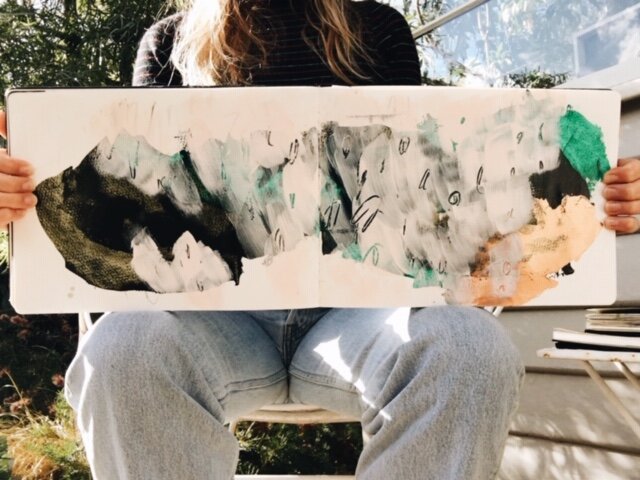Interview with Eimear Coffey from the Draft Collection
written September 26, 2017
What is arts therapy?
Arts therapy is a form of therapy that engages creative modalities, including visual art-making, music/sound, dance/movement, the written and spoken word, with therapeutic outcomes. This creative engagement brings us into the present moment, it puts us in touch with who we are and helps us to connect with others. It engages our preverbal and pre reflective self, empowering the expression of feelings and strong emotions and deepening the exploration of recurrent issues and behavioural patterns.
Arts therapy can restore or provide a sense of cohesiveness to individuals and communities, by supporting people to learn more about themselves and providing a space to begin to make sense of how they live or considering ways they may prefer to be in their lives.
When did you decide this was a path you wanted to go down?
I think I’ve always travelled this path, I just didn’t realise it had a name, that it could be harnessed and shared with others as a form of therapy.
I’ve always held firm to my creative endeavours and used them to cultivate my own wellbeing, I found that communication through artistic pursuits could speak to things in a way that I could never manage with verbal language. I love writing and listening to music, reading books and poetry, but using my hands to create has been a primary form of expression for as long as I can remember.
I have dyslexia and a fair amount of social anxiety, so I really struggle to match the thoughts in my head and the sensations of my body with the words that come out of my mouth. I have a strong connection with my body, body language and inner sensing, it's often how I engage and learn about others, by watching their body language and using my own inner sense to guide me. When I am making marks I don't falter, I feel confident, like the artwork has the potential to capture all that I have to convey in a raw and authentic way. The truest form of my whole self speaking.
So when I came across an area of study that could help me assist other people and communities, to learn more about themselves, I knew that it was the path for me.
How do you find time to practice art?
I make time! I find it useful to have a loose routine, that helps me set aside time to focus on my practice, but if i’m being honest, most of my artwork is done by seizing every opportunity that arises and carrying art materials around with me most of the time. So children’s nap times, train rides and sleepless nights all turn into wonderfully productive moments.
How would you describe your artistic style?
Gestural abstract expressionism. I use the gestures of my body in combination with art materials to express sensations or reflections about my personal experiences.
I find this way of working, a powerful way to reflect and process my recollections, as it captures an implicit dimension of my experience, something that sits at the edges of my conscious and as such is unavailable to my purely cognitive, sometimes self-critical thought.
I’m incredibly sensitive to my environment and the people that cohabit it. Light, smell, textures, objects and other people's moods all influence the way I feel. If it's an adverse experience, I have found it's generally enough for me to just be aware of myself and how i’m being affected, to acknowledge what's happening. On the flip side, I never cease to be amazed at how exhilarated I can feel when I'm near the ocean or deep in the bush.
I grew up between the beaches of Sydney’s east coast and the lush green mountains of Melbourne’s dandenong ranges. I feel like my body has kept a memory of my childhood sensations and experiences in these space and these evocations manifest in my work. Nature serves as a constant inspiration, its energy, movement and interwoven textures, it is a restorative presence where I can feel connected and at the same time be a passive observer of its power and beauty.
How important is art?
Art feels paramount to me. On a personal level, creative dialogue feels like my primary language, it is the most authentic way I know to communicate and helps me find my place in my environment, by providing me with the space to explore and respond. On a larger more universal level, I feel like art is a platform for so much more; it can express and generate ideas that instigate change at grassroots levels, it creates and connects communities and it can establish a discourse that extends beyond the limitations of language and culture in a non didactic way.
Consider the reach and universal effect of works by Frida Khalo or the impact of literary works like Uncle Tom’s Cabin (Harriet Beecher Stowe) and 1984 (George Orwell). There is so much power in the minds of people, it's just a matter of tapping into a way of communing that feels indigenous and authentic to the individual.
Is art for everyone?
Yes, unequivocally and emphatically.
Art can hold significance for everyone, the maker and the audience. It evokes a myriad of dialogues at the same time, provoking thought and reflection. Art has the power to transcend any label culture likes to prescribe and moves across time, as we still find significance in work created centuries in the past.
I think this quote from Deborah Kalmanowitz articulates my sentiments in a much more eloquent way;
BUT ART CONTAINS WITHIN IT NOT ONLY THE BEAUTY OF BEING ON THE EDGE, BUT THE CAPACITY AND POTENTIAL TO BE ON THE
SEAM, TO JOIN THE MULTIPLE EDGES AND SEW TOGETHER AND SHOW NOT ONLY THAT WHICH IS SPOKEN, BUT ALSO THAT WHICH
IS IMPLIED.
How can art affect people who are not associated/interested in art itself?
Maybe I’m an idealist, but I truly believe there is an art form which can engage and affect every individual. I don’t believe you need a certain education or cultural pedigree, I think it’s just in everybody. Art has exist from the very beginning of human evolution, in rock paintings, song and dance, I feel like it is in the fibre of our being as a way to connect with others, to explore and reflect on our human experience, as individuals and as part of a community.
What do you wish people see when they look at your work?
I hope they feel something more than see anything. I think there’s a beautiful dynamic that is available between the viewer and the artwork, that can exist in the absence of the artist. Something that comes alive and resonates for each person. I found that people generally have an instinctual response to my work, they feel things they can't verbalise or give rational thought to, which makes me feel wonderful, because that's how I am when I am creating.
The arts and art making are a forum for expression and communication. There is a layer of communication that emerges when we experience art together. A charge in the space between the witness, artwork and maker that is constantly evolving and only possible when we open ourselves up to share our creations. This is the importance of allowing your work to have an audience, to open a new discourse.
What defines something as art?
The maker and viewer.
It could be suggested that art is defined by the intention of the maker, but I think the parameters then become too formal. Art is subjective, it has the power to make you think and feel, it is not only found in formal setting like galleries, but can be everywhere.
Art is a mercurial form of expression, its capacity to be defined varies. But it lives in the moments of creation and the reception of an audience.
How important is it that art remains unrestricted and continuously developing?
I think art, by its very nature, exists in a liminal realm. It is the expression of emotion and thought and nothing good will ever come from censoring those aspects of ourselves.
How has social media affected the art world?
I feel like social media has made the art world more accessible. It bypasses the commercial aspects of art (marketing and exhibiting to gain exposure) and the financial restriction emerging artists feel exhibiting in a traditional gallery space. Additionally it reduces the aristocratic stimaga that surrounds art by exposing the machinations of the artist, whist simultaneously creating a global community of creatives. I have nothing negative to say about the impact of social media on the art world, I believe art is for everyone to create and enjoy, social media makes that an easy thing.


